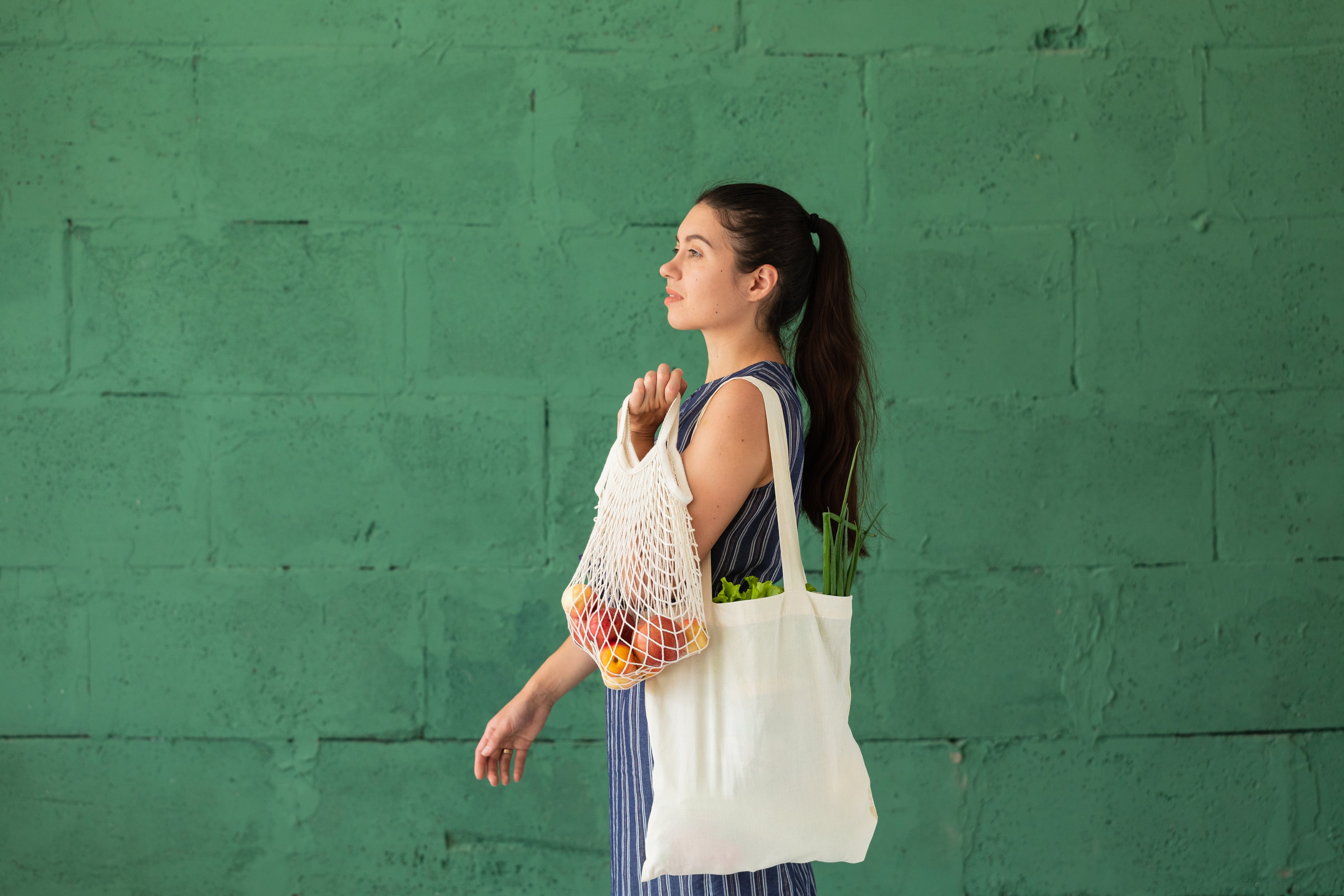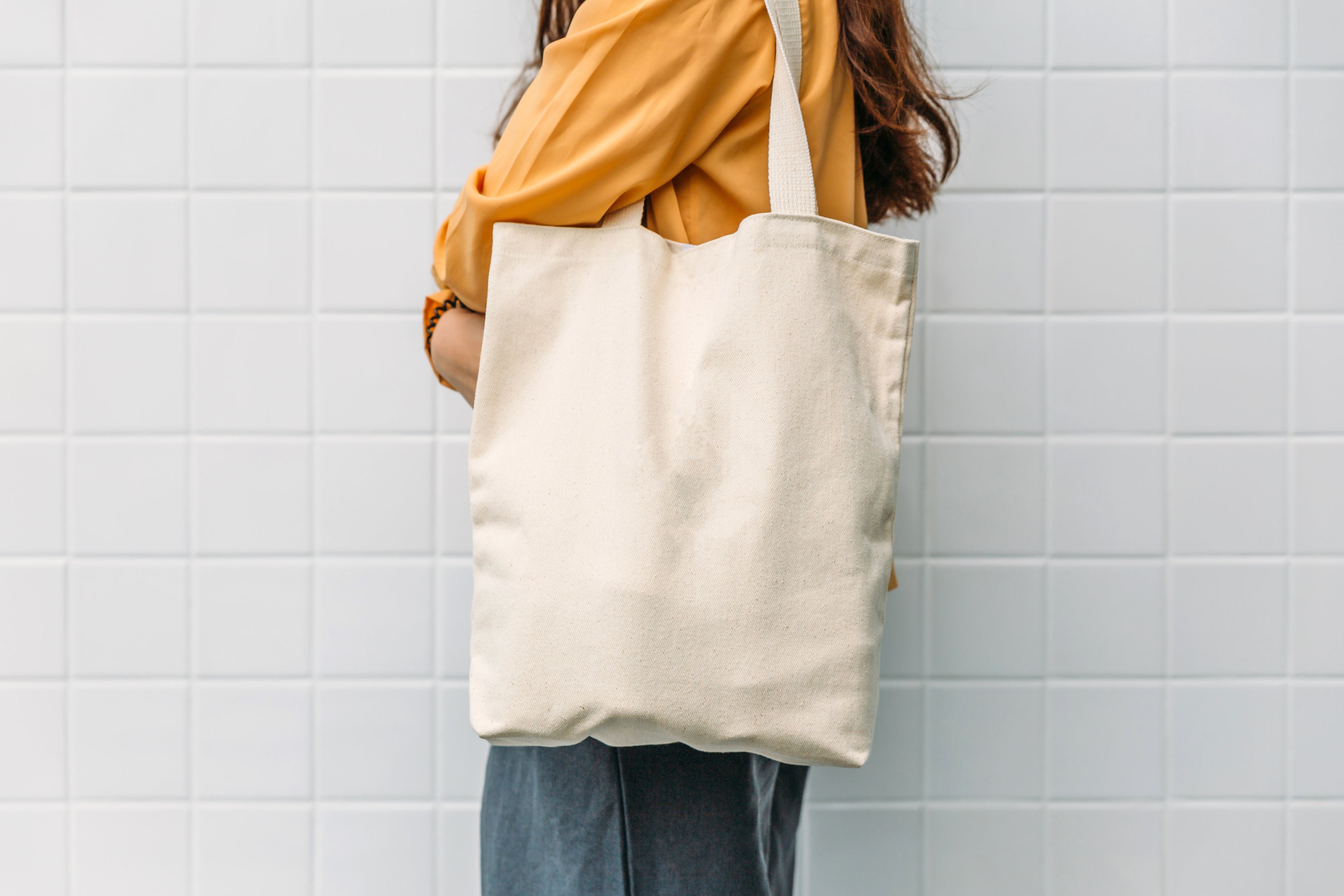Are cotton tote bags as good for the environment as we think?
The humble cotton tote bag has become something of a fashion item, one that sends the message that certain brands are eco-conscious, but they are not as good for the environment as we think, says Grace Cook

Your support helps us to tell the story
From reproductive rights to climate change to Big Tech, The Independent is on the ground when the story is developing. Whether it's investigating the financials of Elon Musk's pro-Trump PAC or producing our latest documentary, 'The A Word', which shines a light on the American women fighting for reproductive rights, we know how important it is to parse out the facts from the messaging.
At such a critical moment in US history, we need reporters on the ground. Your donation allows us to keep sending journalists to speak to both sides of the story.
The Independent is trusted by Americans across the entire political spectrum. And unlike many other quality news outlets, we choose not to lock Americans out of our reporting and analysis with paywalls. We believe quality journalism should be available to everyone, paid for by those who can afford it.
Your support makes all the difference.Recently, Venetia Berry, an artist in London, counted up the free cotton tote bags that she had accumulated in her closet. There were at least 25.
There were totes from the eco-fashion brand Reformation and totes from vintage stores, totes from Soho House, boutique countryside hotels and independent art shops. She had two totes from Cubitts, the millennial-friendly opticians, and even one from a garlic farm. “You get them without choosing,” Berry, 28, says.
Cotton bags have become a means for brands, retailers and supermarkets to telegraph a planet-friendly mindset – or, at least, to show that the companies are aware of the overuse of plastic in packaging. (There was a brief lull in cotton tote use during the pandemic when there were fears that reusable bags could harbour the virus, but they are now fully back in force.)
“There’s a trend in New York right now where people are wearing merch: carrying totes from local delis, hardware stores or their favourite steakhouse,” says designer Rachel Comey. (See: the reboot of Gossip Girl for pop-culture proof.)
So far, so Earth-friendly? Not exactly. It turns out the wholehearted embrace of cotton totes may actually have created a new problem.
An organic cotton tote needs to be used 20,000 times to offset its overall impact of production, according to a 2018 study by the Ministry of Environment and Food of Denmark. That equates to daily use for 54 years – for just one bag. According to that metric, if all 25 of her totes were organic, Berry would have to live for more than a thousand years to offset her current arsenal.
“Cotton is so water-intensive,” says Travis Wagner, an environmental science professor at the University of Maine. It’s also associated with forced labour, thanks to revelations about the treatment of Uyghurs in Xinjiang, China, which produces 20 per cent of the world’s cotton and supplies most western fashion brands. And figuring out how to dispose of a tote in an environmentally low-impact way is not nearly as simple as people think.
You can’t, for example, just put a tote in a compost bin: Maxine Bedat, a director at the New Standard Institute, a nonprofit focused on fashion and sustainability, says she has “yet to find a municipal compost that will accept textiles”.
Naturally, it soon became a branding tool. The famed cream-and-black New Yorker tote turned into a status symbol
And only 15 per cent of the 30 million tons of cotton produced every year actually makes its way to textile depositories.
Even when a tote does make it to a treatment plant, most dyes used to print logos onto them are PVC-based and thus not recyclable; they’re “extremely difficult to break down chemically”, says Christopher Stanev, the co-founder of Evrnu, a Seattle-based textile recycling firm. Printed patterns have to be cut out of the cloth; Stanev estimates 10 per cent to 15 per cent of the cotton Evrnu receives is wasted this way.
At which point there is the issue of turning old cloth into new, which is almost as energy-intensive as making it in the first place. “Textile’s biggest carbon footprint occurs at the mill,” Bedat says.
The cotton tote dilemma, says Laura Balmond, a project manager for the Ellen MacArthur Foundation’s Make Fashion Circular campaign, is “a really good example of unintended consequences of people trying to make positive choices, and not understanding the full landscape”.
How did we get here?
Arguably, it was UK designer Anya Hindmarch who put the reusable cotton bag on the map. Her 2007 “I’m Not a Plastic Bag” tote, created with the environmental agency Swift, sold for around £5 in supermarkets. It encouraged shoppers to stop buying single-use bags and went effectively viral.
“Eighty thousand people queued in one day in the UK” alone, the designer says. And it was effective. The number of bags bought in the UK dropped from around 10 billion to about 6 billion by 2010, according to the British Retail Consortium. “It was important at the time to use fashion to communicate the problem,” Hindmarch says.

Naturally, it soon became a branding tool. The famed cream-and-black New Yorker tote turned into a status symbol; since 2014, the Condé Nast-owned weekly has gifted 2 million bags to subscribers, according to a spokesperson for the magazine.
Kiehls, the skincare line, offers totes for $1 (73p), while fashion brands like Reformation began bagging purchases in black cotton versions; Lakeisha Goedluck, 28, a writer in Copenhagen, says she has “at least six”. Some customers get rid of theirs by selling them on Poshmark.
The idea, says Shaun Russell, the founder of Skandinavisk, a Swedish skincare brand that is a registered B Corp – or business that meets certain standards for social or environmental sustainability – is “to use your customers as mobile billboards”. It’s free advertising. “Any brand that claims otherwise would be lying,” he adds.
Suzanne Santos, the chief customer of Aesop, doesn’t know exactly how many ecru bags the Aussie beauty brand produces every year but admitted it’s “a lot”. Aesop, which is also a registered B Corp, first introduced them as shopping bags a decade ago; Santos says customers consider them “an emblematic part of the Aesop experience”. So much so that the brand receives angry emails when they don’t arrive with online orders. “Abuse would be the right word,” she says, describing it over a Zoom call from Sydney. (Santos says customers wanting to offload their excess bags can return them to stores, though Aesop doesn’t advertise that possibility on its website or in-store.)
Cotton bags have long existed in luxury; shoes and handbags come in protective dust wrappings. But the supposed sustainability of totes means more brands than ever are packaging wares in ever more layers. Items that don’t even need protection from dust, like hair scrunchies, organic tampons and facial cleansers, now arrive swaddled in a sleeping bag.
“It’s just packaging on top of packaging on top of packaging,” Bedat says.
That’s not to say cotton is worse than plastic, or that the two should even be compared. While cotton can use pesticides (if it’s not organically grown) and has dried up rivers from water consumption, lightweight plastic bags use greenhouse gas-emitting fossil fuels, are not biodegrade and clog up the oceans.

Weighing the two materials against each other, “we end up in an environmental whataboutism that leaves consumers with the idea that there is no solution,” says Melanie Dupuis, a professor of environmental studies and science at Pace University.
Buffy Reid, of the knitwear label &Daughter, halted production of her cotton bags in April this year; she’s planning to implement an on-site feature where customers can opt into receiving one. Though Aesop isn’t halting production, the brand is converting the composition of its bags to a 60-40 blend of recycled and organic cotton. “It will cost us 15 per cent more,” says Santos, but “it reduces water by 70 per cent to 80 per cent”.
Some brands are turning to other textile solutions. Designer Ally Capellino recently swapped cotton for hemp, while Hindmarch introduced a new version of her original tote, this time made from recycled water bottles; Nordstrom also uses similar bags in its stores.
In the end, the simplest solution may be the most obvious. “Not every product needs a bag,” Comey says.
© The New York Times



Join our commenting forum
Join thought-provoking conversations, follow other Independent readers and see their replies
Comments